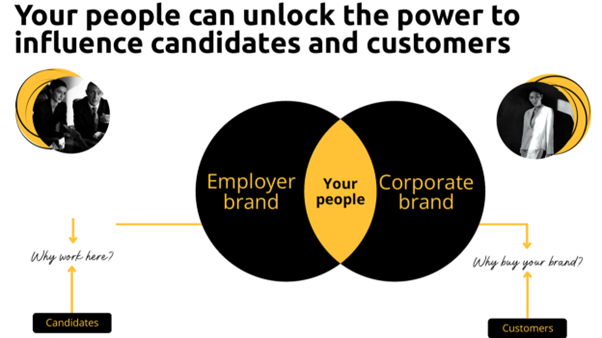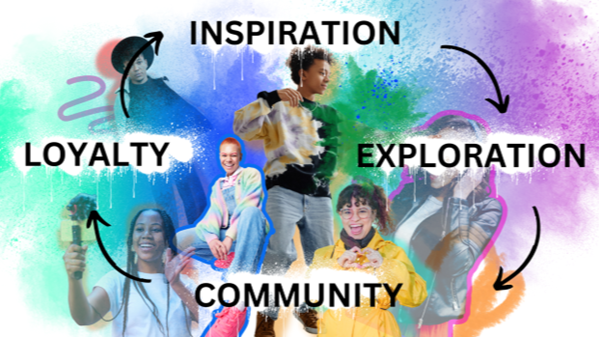HR Tech Transformation: Get ready for take off.

This article unpacks my key learnings about the role of technology in TA/HR transformations. This should be relevant for any organisation wanting to set themselves up for success and shows how to ...get ready for take off.
It’s been an exciting journey over the last 3 months since joining the team at TQSolutions to expand and diversify their Technology & Innovation consulting practice. I am blessed to work with some incredible talent within our business, so it is a joy to come to work everyday.
TQ has been engaged on some incredible consulting projects over recent months, undertaking TA/HR transformation reviews and developing future state strategies, redesigning graduate programs & rethinking Internal Mobility across companies in FMCG, Professional Services, Banking, Retail, Tertiary Education & Technology. It has been eye opening to work alongside these titans of industry and play a pivotal role in shaping their thinking & direction whilst navigating the complexities of their businesses.
The common thread I’ve seen
All of these projects have a common thread – technology and the desire to innovate (which explains why I’ve been so busy since starting, right!! :-)). Unpacking this further there are two consistent themes.
- the need for technology to deliver an enhanced experience & drive efficiency for 3 core audience groups – candidates, people leaders and HR/Talent functions.
- the fact that clients are relying on a core system of record (SAP, Workday, Oracle) which are not really designed to deliver the experience or functional requirements of the business.
So what should you consider when embarking on this brave new HR Tech journey? …And not blindly go forth into the HR Tech world as though you were Bilbo Baggins in the Hobbit chasing adventure!
1. Get clear on the critical problems to solve
Many businesses & HR/Talent leaders gravitate towards adding different tools and technologies into the tech stack on the ‘promise’ of addressing their problems or challenges… however the reality is that the business or leaders are not always clear on what the ‘real or critical problems to solve’! They put in a new cool tech hoping that all their problems will disappear, but just find that they are dealing with a new set of challenges around integration, process, adoption and not thinking through what the measures of success should be! Success is built on pillars of people, process, tech and behaviours/mindset.
2. Clarity of ‘tech purpose’ and ‘audience’ for your HR Tech Stack is important
Building your tech stack can take some thinking, particularly when it comes to purpose, so you don’t end up doubling up the capability of products. Creating a journey map as to where people are spending their time today and where you see them spending their time in your new tech stack is a worthwhile exercise. HR/Talent professionals by nature are process junkies (sorry guys… I know so many of you are trying to break these shackles!), so thinking through where people will spend their time and for what reason becomes really important.
The audience/users is also an important consideration, particularly when you are layering in more and more AI capability – where will the Hiring Manager review a shortlist or schedule an interview? where will HR draw their reporting and analysis from? when a CRM is in place and it is synchronising statuses with your ATS do you spend your time in the CRM or the ATS?
Below is a visual example we worked on with a client recently when they were looking to introduce a CRM and Internal Mobility solution, whilst also having additional tools within their stack. The extension of this is how these tools integrate and what data moves where.
3. Do your research! It’s a noisy tech market out there
There is a lot of Talent & HR Tech out there, and it can be pretty overwhelming right! Ultimately, organisations are looking for tech to help them get things done, most of which is focused at freeing up time or reducing cost. What is interesting, is the more tech you layer into your stack the more work it creates for you, resulting in you becoming less efficient and costing you more in terms of time (particularly through implementation) – be that integration, data accuracy, time in product or simply just trying to remember what tool to log into and why! It is important to call out though, that there are some incredible case studies around the results that tech is producing for their clients though, so my comment relates more to the layering in of more and more tech over time!
The pace of innovation and investment in HR and TA tech has been incredible over the last 5 years. According to US industry analyst George Larocque there has been over $13B YTD venture capital investment into the ‘WorkTech’ category, so you can expect the innovation within this space to increase rapidly over the coming years… particularly within the ‘white hot’ Internal Mobility & Workforce Intelligence space.
There are a lot of players in various categories, and I have grouped these into various sections in the image below. This view is not intended to list all of the vendors in these categories (so apologies to any of the vendors out there that I may not have included), but merely lists vendors that we see doing really interesting things in these categories. Nor does it is truly demonstrate the fact that many of the vendors sit across multiple categories as well – e.g. SmartRecruiters has a CRM/Careers Site builder and Chatbot within their platform as well so you may not need to augment it with another tool; or that Reejig are taking a completely different approach to how a CRM typically works with their engagement nudge capability. There are also some really exciting start-ups emerging in Australia in these categories as well.. but more to follow on that in future blogs.
There is also a lot of ‘vapourware’ out there as well, where you get sold the dream but when it comes to putting it into practice within the complexities of your organisation you typically come unstuck. Sometimes this just comes down to asking the right questions to dig 3 layers deeper to understand how it works or connect it with a use case that is relevant for your business, this is all it can take to cut through the vapour. 🙂
4. Partner, don’t just purchase
Having worked on the vendor side for a long time, at LiveHire, I always used to bang on about the importance of understanding the pain and what is causing it both at a process, tech and operational level. Working in partnership with your vendors to help collaborate on creative ways to solve these ‘critical problems to solve’ through the sales process, are really important foundational layers to setting yourself up for success… so understanding a vendor’s approach to partnering and undertaking some initial workshop discussions around specific use cases will help bring this to life. Doing this through the sales process is important as this will ensure that you’re not just being sold the ‘promise’ but you can actually get a sense of their critical thinking and partnering approach… plus I know the vendors would always prefer to partner to achieve success not just purchase (however some may feel differently… particularly as they get very large!!).
5. Get evidence of delivering a roadmap at pace
Understanding what a vendor has delivered over the last 12 months and what % of that innovation was strategy led vs customer led is always a good barometer on how quickly your chosen partner will innovate and also how they’ve approached the development of their product. Understanding their product roadmap and where they intend to invest is also important as this will help shape your business case for partnering not just for the problems of today but also for the future. When exploring the roadmap, be sure to understand the timelines they intend to deliver and what is locked in on the roadmap vs what they are still yet to be worked out (which means there is no commitment on timeframe… so don’t bank on it!).
6. Not all integrations are created equally
Integration is always a key piece to navigating your decisions as well. Anyone who has been involved in an integration or implementation project will tell you that simply saying “yeah we have API” and “yeah we have integrated with them before” simply doesn’t cut it! You need to understand how the integration works – What are the triggers; Is it API or file based; Frequency (it is real-time or not); Is it one way or a two way sync of data; How do they track errors; Who builds the integration and what is involved to set it up and support it. I’m not expecting you to dive deep into the technical discussion, but thinking through the behaviour of the integration as it pertains to your working world is important to understand.
7. Speak to others who’ve walked the same path
Speaking to reference sites where the tech has been implemented and deployed is a great way to take learnings from others, particularly when it comes to the implementation experience. I have heard many horror stories of being sold the A-team through the sales process to only get the C-team who are not able to answer your questions or guide/consult you on the best way to set the tech up for success. Understanding these experiences, learnings, workarounds, working relationships and support are really important inputs so you go in eyes wide open!
8. Don’t underestimate the change implications
When looking to implement new technology, you need to really be mindful of the impact it will have on areas of your business. It is important to consider the factors of successful adoption (point #1) and then map back to the people and areas of your business where there might be an impact to their ways of working. Be sure to engage with the stakeholders that see this impacting (be that negative or positive). Communication & having a plan is a sure fire way of minimising the impacts of change and increasing the level of excitement around your initiative. A well thought out strategy and technology to underpin it will greatly assist in unlocking transformational change for your business.
Final Thoughts:
Remember tech is the enabler, genuine change and success requires wider business transformation and considerations around people, process and behaviours. It can be daunting to sail through the sometimes choppy seas that is the HR/Talent Tech landscape, but if you focus your effort on getting clarity on your problems to solve then you can approach your journey with greater clarity so you don’t get taken off course!! That’s the end of my sailing references I promise!! 🙂
If you would like to discuss any of this, or explore how TQ can help you navigate this complexity then please reach out. Stay tuned for my next blog on the key HR/Talent Tech trends we are seeing emerging in the Australian market.



